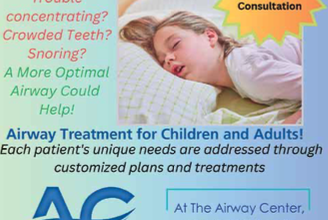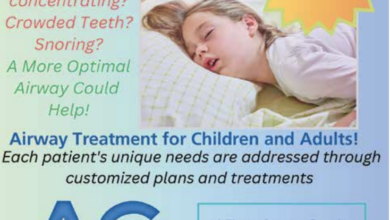Why Early Orthodontic Evaluation Could Transform Your Child’s Health and Smile
When it comes to making health decisions for our children, many parents feel overwhelmed. Balancing consulting with professionals, trusting your instincts, and the sheer volume of available information can be daunting. Dental health decisions are no exception. Between ages 7 to 18, nearly every parent and child face the expectation of visiting an orthodontist. Aside from the financial considerations, there’s societal pressure to ensure your child has a straight and beautiful smile. But beyond aesthetics, a crucial question often goes unasked until later: What’s the best path to ensure your child’s overall oral and physical wellbeing?
Traditionally, referrals to orthodontists begin when permanent teeth start to come in crooked or when bite issues become apparent. Common treatment methods, such as tooth extractions to create space and the use of rubber bands or appliances to adjust jaw alignment, can be quite forceful and invasive. These procedures may reduce the palate size and can place the jaw into unnatural positions. While these approaches may result in beautiful, straight smiles and well-aligned bites, they sometimes inadvertently compromise sleep quality and airway health. This occurs because these methods can restrict or retract natural growth and diminish tongue and airway space. As a result, patients may later experience chronic pain due to temporomandibular joint (TMJ) dysfunction or suffer from sleep apnea due to insufficient space for the tongue, causing airway blockages.
The Airway Center offers a progressive approach by supporting the natural growth and development of a child’s jaw. Often, the lower jaw is locked behind the upper jaw, restricting its natural forward growth, which causes the jaws to grow downward instead. This growth direction limits airway space, predisposes children to mouth breathing, and compresses the TMJ. By focusing on promoting natural growth pathways, we strive to alleviate these issues, offering children a healthier developmental trajectory.
Many parents wonder if waiting might allow the jaws to grow naturally, potentially avoiding orthodontic intervention. However, early detection is key. As early as age two, a trained dentist can spot signs of underdeveloped jaws and predict future growth patterns. Addressing these issues early sets children up to have—ample space for adult teeth and tongue resulting in improved airway space, and a healthier lifestyle.
While straightening teeth is beneficial, the primary reason parents should consider an evaluation for children under age five is to enhance sleep quality and improve oxygen intake. Symptoms like mouth breathing, teeth grinding, behavioral issues, snoring, frequent waking, nightmares, and decreased immunity can often be linked to deficits in oxygen and sleep. Many parents observe numerous health benefits during and after treatment, including improved concentration, higher energy levels, better emotional regulation, fewer illnesses, and improved nasal breathing.
Dentists are uniquely positioned to evaluate airway health in patients of all ages and to offer vital recommendations and referrals, significantly affecting patients’ lives. We aim to broaden the horizon of orthodontic techniques, improving health, smiles, and futures across generations. By integrating airway health into our dental treatments, we deliver solutions that prioritize overall well-being while achieving aesthetically pleasing and beautiful results. Imagine a future for your child where they sleep soundly, breathe deeply, and wake up refreshed and ready to tackle each day with energy and enthusiasm.
Curious to learn more about airway health? Turn to the back page where we highlight real examples of treatment in young children. Join us each month as we explore diverse topics and innovative treatments designed to enhance airway health for individuals of all ages. Our articles aim to empower and guide you in understanding and improving your own health through airway wellness.


